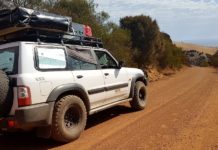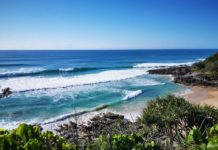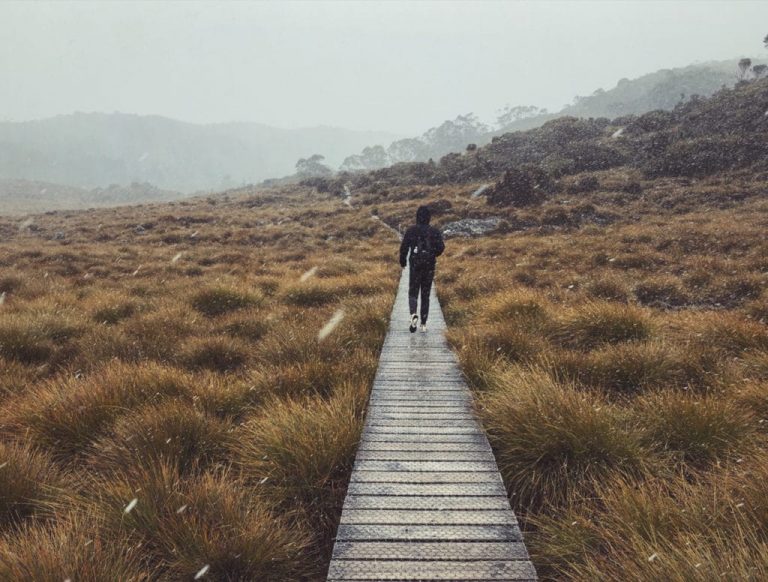
Cradle Mountain Lake St. Clair National Park is one of Tasmania’s jewels and a UNESCO World Heritage Site. This park is full of glaciers, rainforests, lakes, and wildlife and definitely a must-see in Tasmania. In this article, we have drawn up a route for a walking trip, to ensure that in 2 days you will see the mountain from all angles. Start your trip at the National Park Office at the foot of the mountain to begin a colorful, high altitude and, above all, emotional journey.
Table of Contents
Cradle Mountain – Lake Saint Clair National Park
Cradle Mountain-Lake St Clair National Park is part of the Tasmanian Wilderness World Heritage Area. The park covers an area of about 1,616 square kilometers, offering a stunning landscape dominated by the rugged Cradle Mountain, which reaches an elevation of 1,545 meters. Historically, the area was named after its resemblance to a gold mining cradle, and it has been a key part of Tasmania’s natural heritage since it was declared a national park in 1922.
Visitors to Cradle Mountain-Lake St Clair National Park can engage in a variety of activities. The park is renowned for the Overland Track, a famous 65-kilometer trek that offers one of Australia’s most iconic bushwalking experiences, typically taking six days to complete. Additionally, shorter walks such as the Dove Lake Circuit provide more accessible options for those seeking less strenuous activities. The park’s diverse ecosystems are also a haven for wildlife enthusiasts, who may spot Tasmanian devils, wombats, and a variety of bird species. With its dramatic landscapes and rich biodiversity, Cradle Mountain-Lake St Clair National Park is a must-visit destination for nature lovers and adventurers alike.
Exploring Cradle Mountain National Park – Day 1
Arrival in the park
Although the island of Tasmania is small, part of the day is eaten up by the journey to reach the office. This can be an opportunity to make a few stops before arriving at the park, and take advantage of the magnificent roads in the north and south. To the north you can take the coastal road which, although lengthening the journey time, is definitely worth the detour. To the south, a stop in the mining town of Queenstown and the Iron Blow lookout will transport you to another era. Little by little it is already noon. But don’t worry, there is still a full afternoon at Cradle Mountain.
This is an opportunity to take stock of information and desires at the national park office but also to buy the (very) expensive pass. Count $20 per adult per day. We strongly advise you to take the 8-week car pass at $80 which will allow you to visit any other park on the island.
Short hiking trails
Vehicles are prohibited in the park. The only way to get to the trails is by taking the shuttle. It departs every 10 minutes from the centre and takes you quickly to various stations. The only problem with this shuttle is that the last one departs earlier than 7pm, even though the park only closes then. Decide on some of the trails that start at the Interpretive Centre station. Contrary to what one might think of a 30-minute walk, they are all worth it!
Start with the Enchanted Walk, one of the island’s 60 best hiking trails. At the end you will hike the King Billy Trail, which leads you into a dense forest that could well serve as a shooting location for the movie Lord of the Rings. Then you go on to the Pencil Pine Falls, a small waterfall. If you’re lucky, you’ll see a wombat strolling across the street. The walk is pleasant and relaxing. This afternoon’s program gives you just a little taste to warm up your legs before the big hike on the following day.
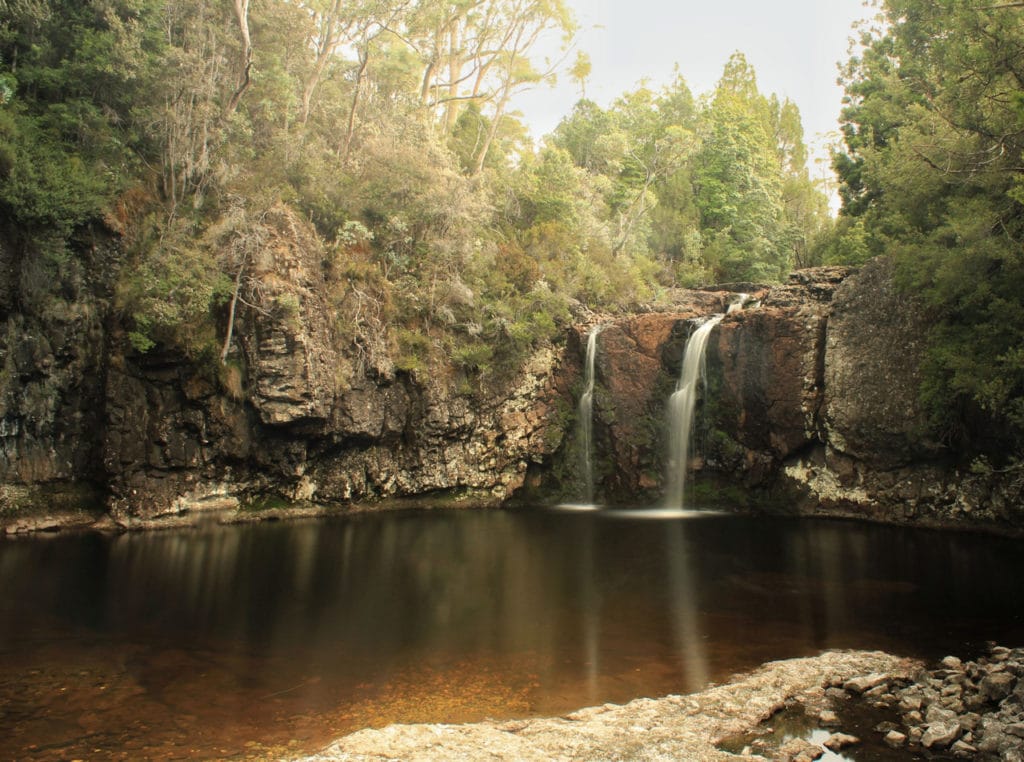
Hike to the Cradle Mountain Summit – Day 2
On the national park website, it is indicated that the walk takes 8 hours (Return) and is Level 5 (confirmed walker, steep path, difficult).
Take advantage of the freshness and silence of the morning to head for Rooney Creek with the shuttle. On the program: Marions Lookout then a passage on the valley before climbing (literally) the summit then descending by Dove Lake. The total is about 18km and is intense. This is to be modulated according to your desires and your physical abilities. We have warned you anyway.
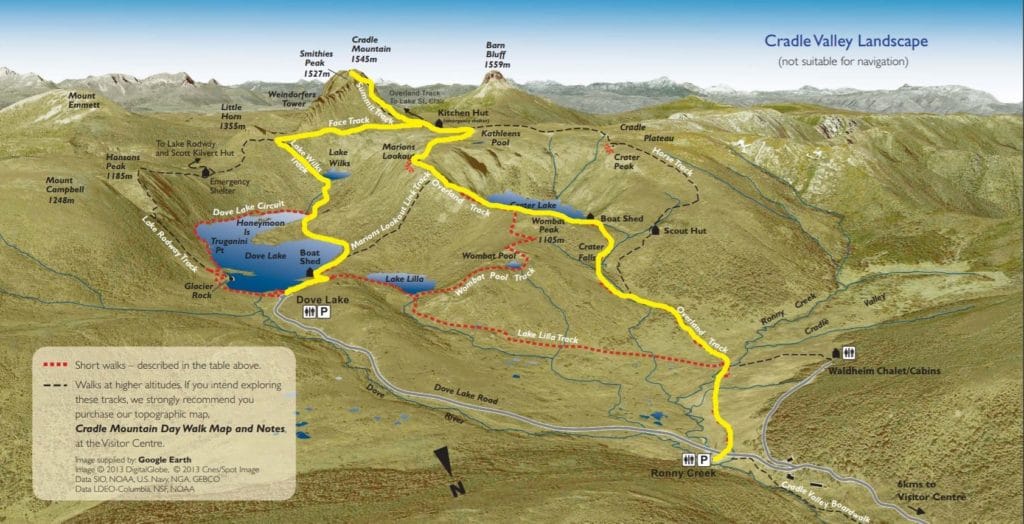
The nice thing is that you can see everything on the way. Even unpaved paths can be seen from the lookouts. Remember to sign up before leaving. In Tasmania, it is mandatory to register before you go on a hike. Are you ready? Let’s go!
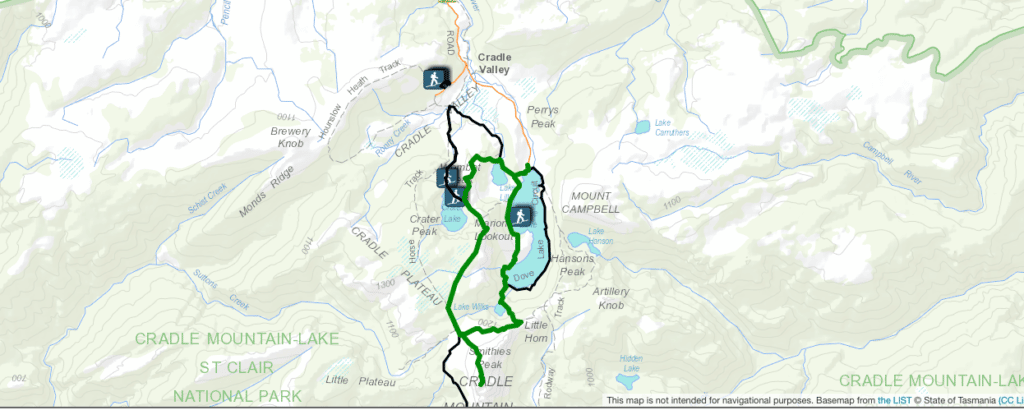
Starting the hike
From Rooney Creek, take the Overland Track Trail on a beautiful wooden boardwalk. Then you head towards Crater Lake. On the way, you walk through a rainforest. Apart from the creaking wood and the gurgling of the river, it is absolutely silent. Finally you arrive at the lake. The mountain is reflected in the water, which is a very picturesque sight.
With a bit of courage, you will reach the Marion Lookout, surrounded by mountains, valleys, and lakes. Directly in front of you is Dove Lake, and a bit hidden you see Wombat Poo and Lake Willis. Take time to look around and enjoy Crater Lake from above. Your destination is so close now: the summit.
Climbing to the summit
Stop at the refuge at the foot of the mountain for a well-deserved picnic. Have a look at your watch and check your water and energy supply. The climb has already been challenging and yet the summit seems to be much higher. The sign at the beginning of the trail indicates a two and a half hour hike. The ascent is not a walk in the park, so plan enough time.
Even though this hike can make the most adventurous hiker sweat, it is obviously very satisfying to arrive at the top and to enjoy the view. Be well prepared, take plenty of water with you, allow enough time, and watch where you’re going (especially during the descent!).
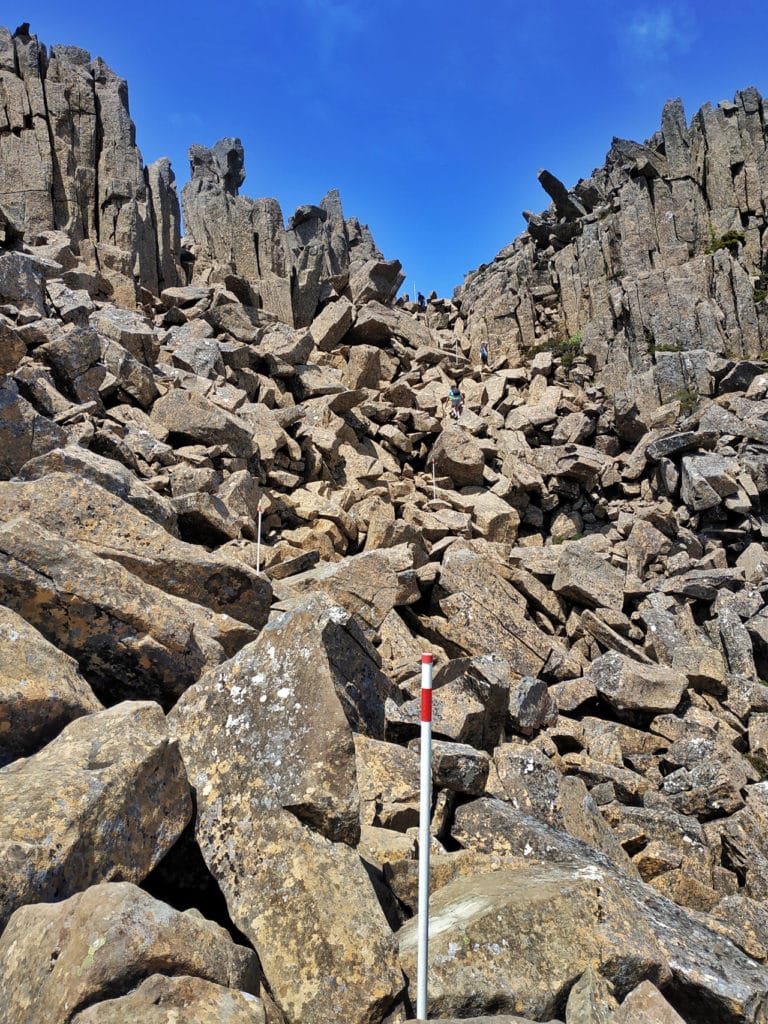
At the bottom of the summit, head for Willis Lake. This descent gives you a taste of what is awaiting you. On the way to Dove Lake, you will get dizzy. At particularly steep spots, you can cling to a chain. Your calves and thighs will be sore for sure, but don’t give up! Go on through a beautiful forest before finally arriving at Dove Lake. All you have to do now is following the trail to reach the end of your hike and find a seat on the bus. Breathe in, admire the view and be proud of what you can do!
Best season to visit Cradle Mountain
The best time to visit Cradle Mountain-Lake St Clair National Park in Tasmania depends largely on what you’re looking for in your visit.
Summer, from December to February, offers the warmest weather, making it ideal for hiking and exploring the park’s extensive trail network. The temperatures are comfortable, ranging from 10°C to 20°C, which enhances the experience of activities like the Overland Track or shorter day hikes. However, this season also tends to be the busiest, so be prepared for more crowded trails and booking accommodations in advance.
For those interested in a quieter visit with the chance to see the park’s famous deciduous beech trees turn into a stunning display of autumn colors, the months of March and April are perfect. Winter, from June to August, transforms the park into a snowy wonderland, suitable for snowshoeing and enjoying the crisp, clear winter air, though some tracks may be less accessible. Spring, meanwhile, brings a burst of wildflowers and the rejuvenation of the park’s flora and fauna, making it a beautiful time for photographers and nature enthusiasts to visit.
Essential tips for hiking in Cradle Mountain National Park
Before setting out on a hike in Cradle Mountain National Park, it’s crucial to come prepared for the park’s variable weather conditions. Regardless of the season, the weather can change rapidly, so it’s wise to carry waterproof gear and multiple layers to accommodate shifts from cold to warmer temperatures.
Always check the weather forecast and park conditions before you start your hike. Proper hiking boots are essential as the terrain can be rugged and slippery, especially in wet conditions. Make sure to carry enough water and high-energy snacks, as well as a map, since mobile reception can be spotty. It’s also a good idea to inform someone of your hiking plan and expected return time.
Additionally, be mindful of the park’s wildlife; keep a safe distance and do not feed the animals. Lastly, always stick to marked trails to minimize your impact on the fragile ecosystem and ensure your own safety in the park.
Practical information
NATIONAL PARK
https://www.parks.tas.gov.au/index.aspx?base=3297
HIKING
https://www.parks.tas.gov.au/index.aspx?base=3305
WEATHER / FIRES
The Australian Weather Forecast – Bureau Of Meteorology : http://www.bom.gov.au/tas/forecasts/cradlevalley.shtml




















